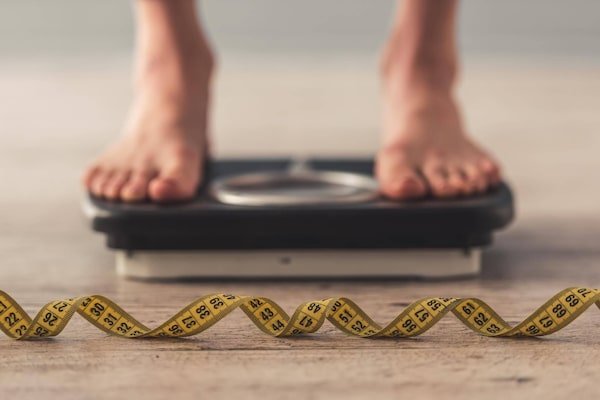
The causes of sarcopenia are complex and multifactorial, but one key factor is anabolic resistance.vadimguzhva/Getty Images/iStockphoto
You might be relieved to hear that the creeping weight gain of middle age – a pound or two (0.5 to 1 kilogram) a year starting in your 20s, on average – eventually grinds to a halt. By the time you’re in your 50s, you’ll typically start slowly shedding weight.
Don’t celebrate yet, though. There’s a good chance that the weight you’re losing is muscle – precisely what you need to hang onto to stay metabolically healthy and independent into old age. The scientific term for this age-related loss of muscle, strength and physical function is “sarcopenia,” a condition that’s often overshadowed by the more urgent battle against obesity – and that oversight, according to a new review paper by Canadian researchers, has potentially serious consequences.
“The aging of the population is the epidemiological trend of our time,” says Camila Oliveira, a nutrition researcher at the University of Alberta. “We know that sedentary lifestyles, poor dietary patterns and increasing life expectancy will dramatically impact the prevalence of sarcopenia in the next decade.”
In a forthcoming issue of the journal Applied Physiology, Nutrition, and Metabolism, Oliveira and her colleague Carla Prado, along with Isabelle Dionne of the University of Sherbrooke, argue that current Canadian nutrition and exercise guidelines are inadequate for preventing sarcopenia and don’t reflect the latest research on the topic. Guidelines for protein intake were last updated in 2005, while physical-activity guidelines date from 2011.
The causes of sarcopenia are complex and multifactorial, but one key factor is that muscle cells in older adults no longer respond as strongly to the muscle-building signals triggered by exercise and protein intake, a phenomenon known as anabolic resistance. That means protein guidelines optimized for middle-aged adults may not be adequate as you get older.
Current guidelines call for a daily intake of 0.8 grams of protein per kilogram for adults. Most Canadians hit that threshold with ease; for example, a Quebec study of older adults called Nutrition as a Determinant of Successful Aging (NuAge) found an average intake of 1.0 g/kg/day. But even that may not be enough, Oliveira says: Another study found that older adults eating 1.2 g/kg/day of protein lost 40 per cent less muscle over a three-year period than those eating the recommended 0.8 g/kg/day.
For adults, prescribed guideline include daily intake of 0.8 grams of protein per kilogram.galaiko sergey/Getty Images/iStockphoto
It’s not just how much you eat. There’s some evidence that spreading your protein across three meals triggers more muscle growth than just downing a massive steak at dinner. And protein quality matters too, with certain amino acids such as leucine playing an outsized role in muscle growth. That means animal proteins such as meat, fish, eggs and dairy tend to pack a bigger punch than plant proteins, although Oliveira emphasizes that variety is also important.
So what should revised guidelines recommend for older adults? Estimates in recent studies range from about 1.0 to 1.5 g/kg/day, but more research is needed to provide a reliable estimate, Oliveira and her colleagues argue. Crucially, any new guidelines should tailor advice for different groups: Older women, for example, lose muscle more rapidly after menopause and may have higher protein requirements than older men.
For physical activity, current guidelines for older adults focus on a goal of 150 minutes of moderate or vigorous aerobic activity every week, with a vague suggestion to do “muscle- and bone-strengthening activities” at least twice a week. Since resistance training plays such a crucial role in muscle maintenance, the researchers argue that guidelines should give more prominence to advice about exactly how much and what type of resistance training is needed.
The overall picture from existing research is that full-body resistance training with loads that get progressively harder over time, two to three times a week, is optimal for older adults. One study published last year found that two harder workouts plus one easier one produced the best results, perhaps because older strength-trainers simply couldn’t recover quickly enough to do three hard workouts each week.
Actually changing nutrition and exercise guidelines is a lengthy and complicated process, Oliveira admits. Some of the machinations have already begun, and scientists are diligently trying to determine exactly what new recommendations should say. But the underlying message is straightforward: To age with grace and strength, Oliveira says, we need to “change the mindset that older adults should remain quiet and spare their energy to stay healthy.”
Alex Hutchinson is the author of Endure: Mind, Body, and the Curiously Elastic Limits of Human Performance. Follow him on Twitter @sweatscience.